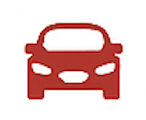How Automotive Traditions and Realities Shape Nicaragua's Roadways
A Snapshot of Nicaragua's Automotive Landscape
Car culture in Nicaragua is shaped by a combination of geography, economic access, and infrastructure development. While private vehicle ownership is on the rise, it remains relatively low compared to more developed nations, largely due to the country's median income level and the high cost of importing vehicles. As a result, cars in Nicaragua are often older models, many of which have been imported second-hand from the United States or Japan.
Most personal vehicles are concentrated in urban areas like Managua, León, and Masaya, where the road networks are better developed. Outside of these cities, car usage drops off significantly, and many people rely on motorcycles, buses, or walking to get around. Fuel costs, maintenance expenses, and the challenging condition of rural roads all contribute to a more pragmatic and less ostentatious car culture compared to wealthier nations.
Import Patterns and the Prevalence of Used Vehicles
Nicaragua imports the vast majority of its vehicles, with used cars forming a significant portion of the market. Importers primarily bring in used cars from the United States, often through auctions or direct purchase of decommissioned fleet vehicles. These cars are then refurbished locally and sold at more affordable rates than brand-new models. Japanese used cars also make up a notable segment, especially models from Toyota and Nissan known for durability.
The importation process is subject to taxes and customs duties, which can raise the final price considerably. This cost barrier makes used cars the most viable option for middle-class Nicaraguans. Despite their age, these vehicles are often maintained with care, and a network of local mechanics specializes in keeping older models on the road using a mix of original parts and improvised fixes.
The Role of Motorcycles in Daily Transportation
Motorcycles are extremely common in Nicaragua and play a crucial role in both urban and rural mobility. They are significantly more affordable than cars, consume less fuel, and can navigate poorly maintained roads and traffic congestion with greater ease. For many families, a motorcycle is the only motorized vehicle they own.
Small-displacement motorcycles, especially those in the 100-150cc range, dominate the market. Brands like Bajaj, Yamaha, and Honda are popular due to their availability and low maintenance costs. Motorcycles are not just used for personal transport; they are also essential for delivery services, small business operations, and even rural medical access in certain regions.
Helmet usage is mandated by law, but enforcement varies widely depending on the municipality. The affordability and versatility of motorcycles have made them central to Nicaragua's transport infrastructure, especially in areas where buses are infrequent or impractical.
Collective Transit and the Dominance of Buses
In the absence of widespread car ownership, buses form the backbone of Nicaragua's public transportation system. Both city and inter-city buses are heavily used, with many of them being decommissioned school buses imported from the United States and repurposed locally. These are often brightly painted and individually named, reflecting a blend of practicality and personal expression.
Urban buses in cities like Managua operate on fixed routes and fares, but the system can be informal and confusing to outsiders. Rural and intercity buses, often referred to as ‘chicken buses,' operate on less rigid schedules and can be overcrowded, yet remain indispensable for low-cost mobility. These buses are often independently operated, and the competition among them can lead to aggressive driving behavior and inconsistent service quality.
Car Clubs, Enthusiasts, and Customization Trends
Despite the practical focus of most vehicle ownership in Nicaragua, there is a small but vibrant car enthusiast community. Enthusiasts often organize informal gatherings or participate in car clubs in cities like Managua and Granada. Popular customization trends include sound system upgrades, custom paint jobs, and rim modifications, although these are limited by available resources and legal restrictions.
The tuning scene has grown modestly in recent years, particularly among younger car owners with access to social media platforms for coordination and inspiration. However, extensive vehicle modifications remain relatively rare due to cost and regulatory concerns. Events like drag races and car meets occur sporadically and are usually self-organized rather than formally sanctioned by the government or major sponsors.
Challenges of Road Infrastructure and Maintenance
Road quality in Nicaragua varies dramatically between urban and rural areas. While Managua and other major cities have seen improvements in recent years, many rural roads remain unpaved or poorly maintained. Seasonal flooding during the rainy season can render entire stretches of road impassable, contributing to vehicle wear and limiting access to remote communities.
The Pan-American Highway, which runs through Nicaragua, provides a crucial artery for both domestic and international trade, but even this major route suffers from uneven maintenance. Potholes, poorly marked intersections, and inconsistent signage are common, and drivers must be vigilant to avoid accidents. Government efforts to improve infrastructure are ongoing but are often limited by budget constraints and political factors.
Environmental Concerns and the Push for Sustainable Transport
Nicaragua's transportation sector is a notable contributor to urban pollution, particularly in Managua. Older vehicles tend to emit more exhaust due to outdated emissions systems, and inspection standards are inconsistently enforced. As such, air quality can suffer in high-traffic zones, especially during peak commuting hours.
There have been modest efforts to introduce electric vehicles (EVs) and improve emissions standards, but adoption has been slow due to high upfront costs and limited charging infrastructure. Some organizations are piloting e-mobility projects, particularly for motorcycles and delivery fleets, as a step toward sustainable alternatives. The government's role in promoting these technologies remains limited, though public awareness is gradually increasing.
